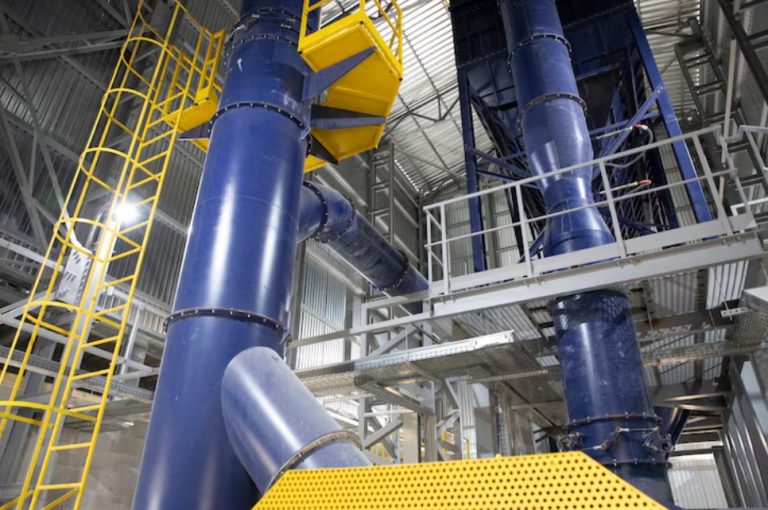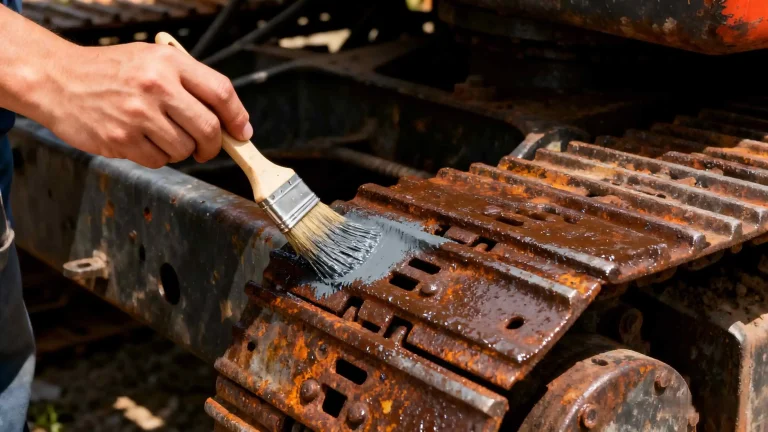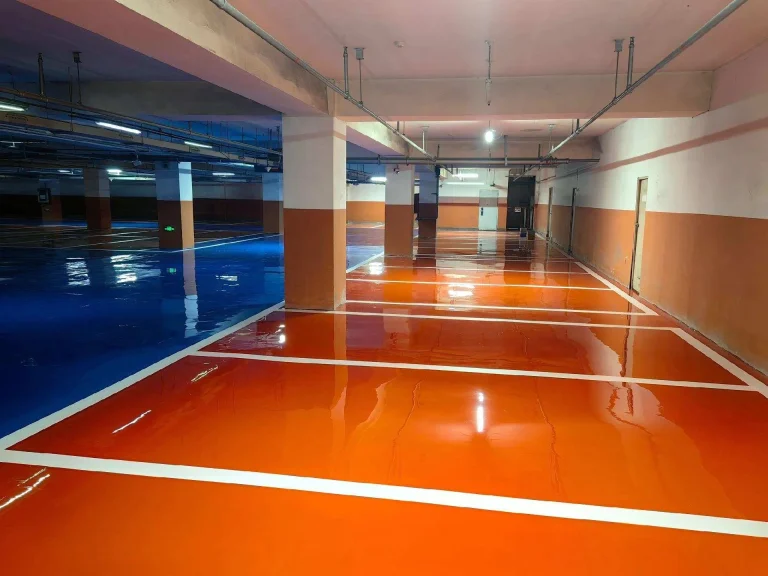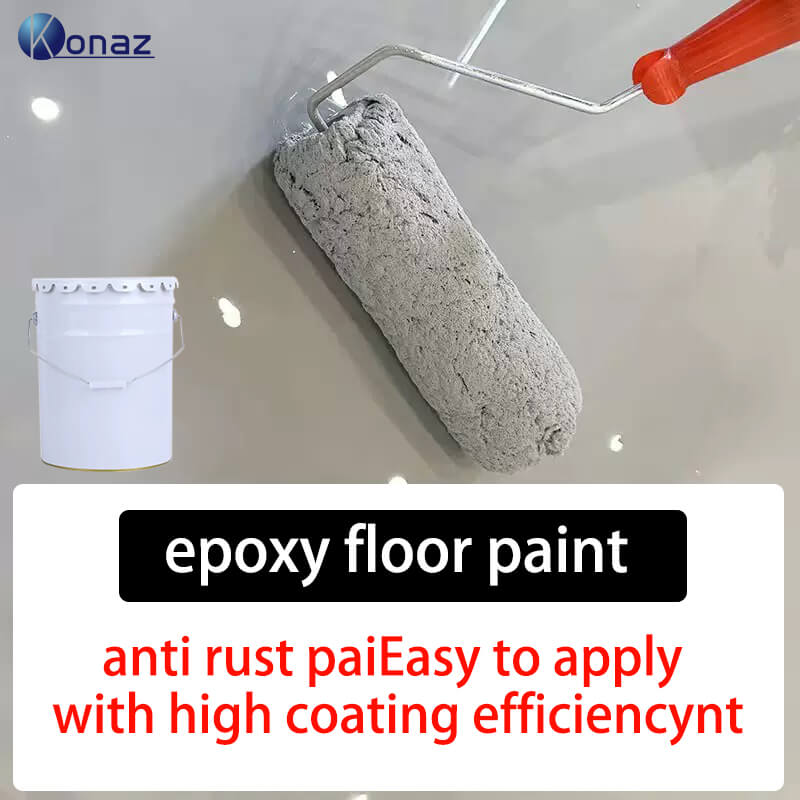
Imagine a hectic Monday in a bustling warehouse on the edge of town. Forklifts dart around. Pallets tower high. The concrete floor, once fresh and smooth, now looks beat-up. Cracks snake across it. Oil stains linger from a spill last week. Dust swirls with every step. The owner—let’s call him Mike—rubs his forehead, frustrated. Constant repairs are draining his budget. Safety issues are tripping up his crew. He’s had enough. It’s time for a fix: industrial epoxy floor paint. If you’re running a factory, managing a parking lot, or fixing up a basement for heavy use, this guide’s for you. We’ll walk through picking the best epoxy, using real-world stories and practical tips. By the end, you’ll feel ready to choose a coating that lasts.
What Is Industrial Epoxy Floor Paint, Anyway?
Industrial epoxy floor paint is a tough, two-part coating. It’s made of epoxy resin and a hardener. Mix them, and a chemical reaction creates a strong bond with concrete or other surfaces. This isn’t your average wall paint. It’s built for the daily grind of industrial spaces.
Think of it as a shield for your floors. Regular paints chip fast. Epoxy forms a seamless, waterproof layer. I’ve seen it turn grimy garages into sleek showrooms. But it’s the durability that really stands out. In places with heavy machinery or chemical spills, epoxy holds up. It’s been around since the 1950s, evolving from basic resins to advanced formulas. These handle everything from foot traffic to forklift wear.
A quick story: I met a shop owner who tried a cheap coating in his auto repair bay. It peeled in months, like a bad sunburn. He switched to epoxy. Problem solved. Epoxy isn’t just talk—it delivers.
Why Choose Epoxy Floor Paint for Your Space?
Your facility’s floor isn’t just something to walk on. It’s the backbone of your operations. A worn-out floor causes downtime, injuries, and repair costs. Industrial epoxy floor paint changes that. It offers protection that saves you money and stress.
First, it improves safety. That shiny surface cuts down on slips, especially when spills happen—and they always do. The National Safety Council says slips and falls cause over a million workplace injuries yearly. Epoxy’s smooth finish lowers that risk, particularly in wet spots like warehouses.
It also saves cash. Yes, it costs more upfront. But over time? You’re barely touching it. No constant resealing or patching. Industry reports from manufacturing hubs show maintenance costs can drop by 50% with epoxy. Plus, it looks sharp. A polished floor gives your space a pro vibe that impresses clients. Picture a logistics center where the floor still gleams years later—that’s the advantage you want.
Here’s why it’s a game-changer:
Tough as nails: Stands up to heavy traffic without cracking.
Spill-proof: Resists oils, acids, and cleaners that ruin regular floors.
Quick to clean: Spills wipe off fast, saving hours of scrubbing.
Better for the planet: Many epoxies are low-VOC, so fewer fumes and better indoor air.
It’s not perfect for every spot. Extreme heat might call for a different coating. But for most industrial setups, it’s a solid pick.
Key Features to Look for in Your Epoxy
Not all epoxies are the same. Some fail in humid conditions. Others can’t handle heavy wear. When choosing industrial epoxy floor paint, focus on features that fit your needs. Here’s what matters, based on real-world use.
Rock-Solid Strength and Wear Resistance
You need a coating that can take a beating. Look for epoxies with high hardness—think Shore D scale above 80. This means no dents from pallet jacks or scuffs from boots. In an auto parts factory I visited, the old floor wore out in six months. The epoxy replacement? Still solid after three years.
Protection Against Oils, Chemicals, and Rust
Industrial spaces get messy. Motor oil, solvents, and cleaners are common. A good epoxy resists these without breaking down. Check for formulas that handle pH levels from 2 to 12. Rust? No issue, even in salty coastal warehouses. Quality epoxy seals out moisture like a champ.
Sleek, Shiny Finish for Style and Function
Industrial doesn’t have to mean dull. A glossy finish looks great and hides dirt better. It’s easier to clean, too. It’s like giving your floor a makeover that works hard. Plus, it reflects light, brightening dim basements without extra lighting.
Simple to Apply, High Coverage
Nobody wants a complicated job. Pick paints that go on smoothly with a roller, trowel, or spray—whatever your team prefers. High coverage means fewer coats to get the job done, saving time and materials. In a parking lot project, a crew coated 5,000 square feet in a weekend, no problem.
Long-Lasting with Minimal Upkeep
Aim for a floor that lasts 10-20 years. Low maintenance means occasional sweeping and mopping, not major fixes. That’s the beauty—spend once, then move on.
One tip from the field: Always test a small patch first. It saves trouble if the coating doesn’t stick right.
Where Does Industrial Epoxy Floor Paint Work Best?
Epoxy is versatile. It fits where regular floors fail. Let’s look at real-world uses to see where it shines.
Industrial Workshops
Workshops are tough on floors. Tools drop. Machines hum. Sparks fly. Epoxy handles it all, creating a seamless surface that’s easy to keep clean. No bacteria or dust hiding in cracks. In a metal fabrication shop, the owner coated 10,000 square feet. Cleaning time dropped by half. No more grime stuck in grout lines.
Parking Lots and Garages
Parking areas—indoor or outdoor—face vehicles, weather, and road salts. Epoxy’s UV resistance (in good formulas) prevents fading. Its grip reduces skids. A Midwest distributor redid their lot after harsh winters ruined the old asphalt overlay. Now it’s smooth and reliable.
Warehouses and Logistics Centers
Storage hubs mean constant movement. Epoxy takes forklifts up to 10 tons without scratching. In a logistics center I read about, they applied it over cracked concrete. It cut downtime from floor repairs, boosting efficiency.
Basement Flooring
Got a damp basement? Epoxy seals out water, stopping mold. It’s a favorite for homeowners and small businesses for storage or gyms. One family turned their leaky basement into a kid-friendly playroom—dry and tough, even after heavy rain.
Commercial and Industrial Floors
From hospitals to grocery stores, hygiene matters. Epoxy’s non-porous surface wipes clean easily. In a food processing plant, it met FDA standards without issue, avoiding costly shutdowns.
These aren’t just ideas—they’re real cases where epoxy turned problem floors into strengths.
How to Pick the Perfect Industrial Epoxy Floor Paint, Step by Step
Choosing feels like a lot? Break it down. Start with your space. What’s the traffic like? Any chemical spills? Temperature changes? Match those to product specs.
Think about surface prep. Concrete needs to be clean and etched for the epoxy to stick. Budget matters, too. Check coverage rates to stretch your dollars.
Here’s a table with key specs for a smart choice:
| Feature | Recommended Spec | Why It Matters |
| Color Options | Green, Grey, Blue, or Custom | Blends with your space’s look. |
| Finish | Glossy | Easy to clean, looks bright. |
| Theoretical Coverage | 4–6㎡/kg (two coats, two-component) | Covers more area for less cash. |
| Drying Time | Touch dry ≤4h, Hard dry ≤48h (at 25°C) | Get back to work fast. |
| Application Method | Trowel / Roller / Spray | Works for pros or DIY teams. |
| Packing | 20kg/set (two-component) | Easy to handle, less waste. |
| Shelf Life | 12 months (sealed, stored properly) | Stock up without worry. |
Try samples. Read reviews from users in similar setups. If you’re in a pinch, talk to a supplier—they’ve seen it all.
Tips for Applying Epoxy and Mistakes to Avoid
Applying it right is crucial. Prep the floor well: Sweep, acid etch, rinse. Mix the components exactly—too much hardener messes up the cure.
Apply in 50-90°F weather, no rain. Two coats usually do it, with 24 hours between. For large jobs, section off areas to avoid seams.
Mistakes to skip? Don’t rush the curing time. It leads to soft spots. Don’t ignore humidity—it can bubble the finish. I heard about a warehouse that painted over dust. It peeled in weeks. Check everything twice.
A pro move: Ventilate well during application. Fumes can be strong, so use masks and fans.
Why Konaz Is Your Go-To for Epoxy Floor Paint
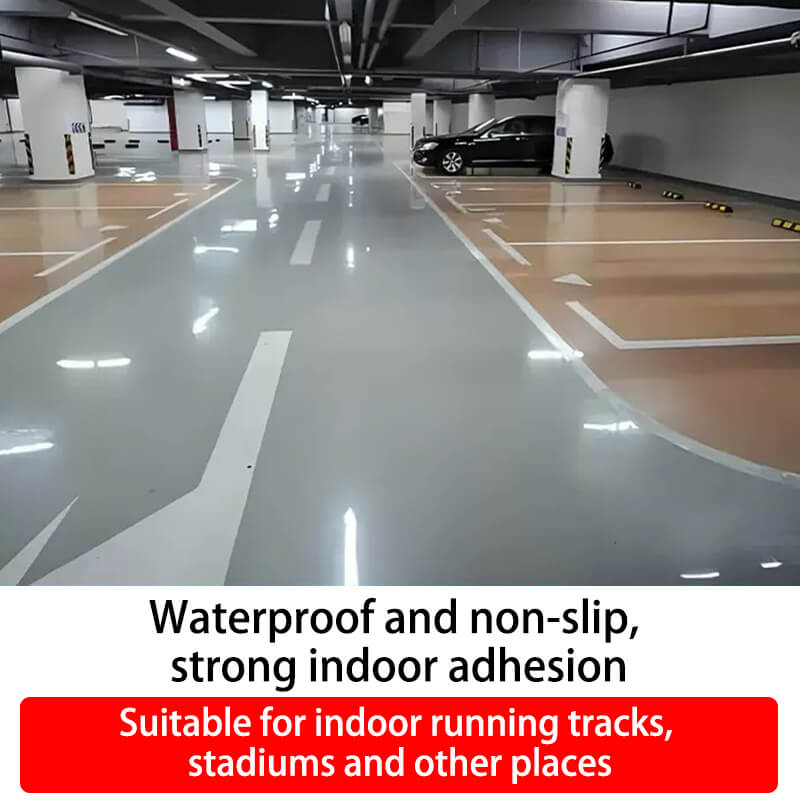
When picking a supplier for industrial epoxy floor paint, Konaz stands out. Based in Foshan, China, they specialize in high-performance coatings for tough industrial needs. Their epoxy line is built for real-world use—think rugged strength for factories or warehouses.
What makes them special? They focus on practical innovation. You get customizable colors and formulas tailored to your setup. Their 3,000-square-meter facility churns out 1,000 tons a year, meeting global standards. They export worldwide, ensuring strong adhesion and low upkeep. Plus, their support is solid—24/7 hotlines and easy returns make things hassle-free. If you want a supplier that understands industrial demands, Konaz delivers coatings that boost efficiency and cut costs. Their website has all the details, clear and simple.
Conclusion
Choosing the right industrial epoxy floor paint comes down to matching toughness, ease, and your specific needs. From busy workshops to damp basements, epoxy turns spaces into safe, efficient areas. It’s not just a floor—it’s a way to streamline work and skip repair headaches. Dive in, check your needs, and make the switch. You’ll wonder why you didn’t do it sooner.
Frequently Asked Questions (FAQs)
Why does the ultimate guide to choosing the right industrial epoxy floor paint matter for facility managers?
This guide breaks down what makes industrial epoxy floor paint a smart pick. It covers strength and chemical resistance, which affect your day-to-day. For managers, it’s about avoiding bad choices—like coatings that crack under heavy loads. It saves time and money by focusing on long-lasting floors for busy spaces.
Is industrial epoxy floor paint a good fit for my warehouse?
Check your warehouse’s needs—think heavy traffic or spills. Industrial epoxy floor paint shines with its shiny, easy-to-clean surface and oil resistance. It sticks well to worn concrete if prepped right. A warehouse I know cut slip incidents by 30% after switching. Just match the formula to your conditions.
Can the ultimate guide to choosing the right industrial epoxy floor paint help with basements?
Yes, it’s spot-on for basements. The guide highlights water resistance and fast drying—under 48 hours at room temp. It’s perfect for turning damp areas into usable spaces without mold. A friend coated his home shop basement. Now it’s dry and tough, even after storms.
How long does industrial epoxy floor paint last, and how do I care for it?
Quality industrial epoxy floor paint lasts 10-20 years with little upkeep. Just sweep and mop now and then. Avoid harsh scrubbers to keep it shiny. The guide emphasizes choosing tough formulas for longevity. Harsh conditions might need touch-ups sooner, but it’s mostly set-and-forget.
Are there custom options for industrial epoxy floor paint in commercial spaces?
Definitely. Suppliers offer colors like green or blue, plus custom shades for branding. The ultimate guide to choosing the right industrial epoxy floor paint notes glossy finishes for commercial spots like stores. It spreads easily with rollers, covering 4-6 square meters per kilogram. You get style without losing strength.

